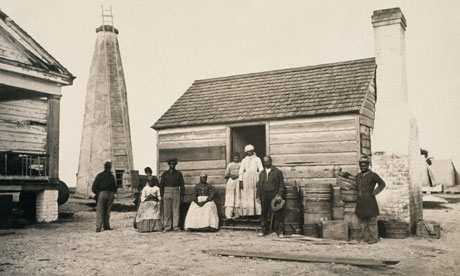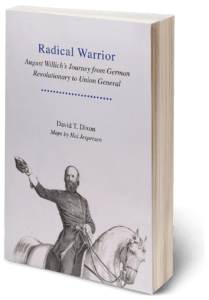With so few actual first-hand accounts of slave life available, many historians have relied on secondary sources written by whites to describe this important and tragic part of American history. Readers must make a special effort to examine the books and other material written by former slaves themselves to get closer to the truth of our nation’s most shameful legacy. As I mentioned in a previous post, even slave biographies and autobiographies themselves can be problematic. Scholars have long-questioned the veracity of some of the accounts and the motivations behind their publication. Let’s examine several different types I consider best-in-class and consider their value as historical sources.
The first known slave narrative is a good place to start. The Interesting Narrative of the Life of O. Equiano, or G. Vassa, the African, was published in London in 1789. Like most slave biographies to follow, Olaudah Equiano’s account was motivated by the author and his sponsor’s strong abolitionist sentiments. Some historians have questioned Equiano’s claim to have been born in Africa (he may have been born in South Carolina) and other details of his life story. There is no doubt, however, about both the popularity and impact of this work. The book went through nine printings and enabled Equiano to achieve modest wealth and worldwide fame. The book was instrumental in bringing public attention to the horrors of the African slave trade, and marked the beginning of the end of this practice (at least legally), with the eventual passage of the British Slave trade Act of 1807. Equiano had an amazing life as a merchant explorer who even travelled to the arctic regions. The book is a worthy introduction to the genre.
Perhaps the most widely-heralded of all former slave authors was Frederick Douglass. In fact, Douglass’s fame in his own time and in ours has cast such an enormous shadow that many students of history read one of his three autobiographies and stop there. That is unfortunate, as there are a number of contemporary black authors who, when combined with Douglass, offer a more varied perspective on slave life from the fields to the “big house” and in between. I prefer his initial effort, Narrative of the Life of Frederick Douglass, An American Slave, published in 1845. No black man in the history of our country until Martin Luther King, has had a greater impact on black identity and race politics. Some contemporaries expressed doubt that a black could have written the narrative, until they heard him speak or read his many letters and pamphlets. The man was a genius and a seminal figure in the early movements for civil rights.
The 1840 to 1865 period was a high water mark for slave biographies. Most were funded by white abolitionists. Many are worth reading. In 1861, Incidents in the Life of a Slave Girl, Written by Herself, was published. The author was former slave Harriet Jacobs. This was the first and one of the very best narratives focused on the life of a slave woman. It is a heartbreaking tale that is part autobiography and part novel. Jacobs merged the two popular forms to create style that was used most effectively in groundbreaking works like The Key to Uncle Tom’s Cabin.
Another important memoir by a former slave was William Wells Brown’s 1847 classic, Narrative of William W. Brown, written by himself. Brown was a contemporary and often a rival of Frederick Douglass. Brown wrote what is generally believed to be the first African-American novel, Clotel, or, The President’s Daughter: a Narrative of Slave Life in the United States, which was loosely-based on the mixed-race children of Thomas Jefferson. Ezra Greenspan did a marvelous retelling of Brown’s complete life story in 2014.
The efforts of Greenspan and Annette Gordon-Reed (The Hemingses of Monticello) are examples of how modern scholars are using the accounts of former slaves, as well as the vast archival resources now available, to flesh out these stories and interpret them within the broader context of their time. Historians with the advantage of hindsight can look back on these accounts and consider the inherent biases of the publishers, as well as do fact-checking that 19th century readers and even editors may not have been equipped or even motivated to do. Modern edited versions of slave biography often lead to a much more rewarding reading experience.
That is certainly true of the gifted historian, David Blight. Perhaps it was some sort of fortunate destiny that led Blight to uncover two slave narratives in 2003 that were never intended for publication. These accounts represent post-bellum accounts, but are different than most, as they were never edited or mediated. In the hands of a brilliant researcher and writer like Blight, they become more than merely fresh primary source documents. Blight uses genealogical sources to reconstruct the lives of Wallace Turnage and John Washington, supplementing their own stories with enhanced context and meaning. The discovery of these two accounts was a historian’s dream and Blight made the most of his opportunity.
The adept use of family history resources can help fill in the story gaps when dealing with a diary or a memoir, as in the case of Blight’s work, but the process can also work effectively in reverse. Edward Ball’s first book, Slaves in the Family, created a buzz when first published in 1998. Ball’s desire to learn more about his ancestors and their slave-owning past led him on a nationwide odyssey , knocking on the doors that held such secrets. In the process, the author met and interviewed dozens of descendants of the Ball family slaves. The book goes well beyond the bounds of conventional history to promote understanding between descendants of both master and slave – a rift that, even 150 years after the civil war, still yawns deep and painful in the psyche of many Americans, especially in the Deep South.
The first stirring of slave biography in the mass media came when I was in high school. My family, whose ancestors had also been southern slaveholders like the Balls, was riveted to Alex Haley’s Roots: the Saga of an American Family. Although the television series was based on a novel, parts of which were plagiarized from an earlier work of fiction, the miniseries created a sensation and was viewed by 130 million Americans. Despite the dubious historical value of the book and television show, they both had an indelible impact on the acceptance of alternatives to the Lost Cause mythology of the Civil War, and helped initiate a revival of interest black history that continues to this day.
The legitimate child of the Roots television series from a historical perspective has to be the 2013 blockbuster film, 12 Years a Slave, adapted from the 1853 memoir of Solomon Northrup. The film will go down in history not simply because it was awarded the Best Picture nod at the Academy Awards, but because it was the first mass market film to accurately depict slavery. The fact that it brings a slave narrative to life and is almost completely derived from extant historical sources bodes well for the history business going forward. In these days of strident gibberish and uncivil animosity from all sides of the political spectrum, it is gratifying to see a popular film with such a truth-telling focus. The public is hungry for such compelling stories told with brutal honesty and human sensitivity.



